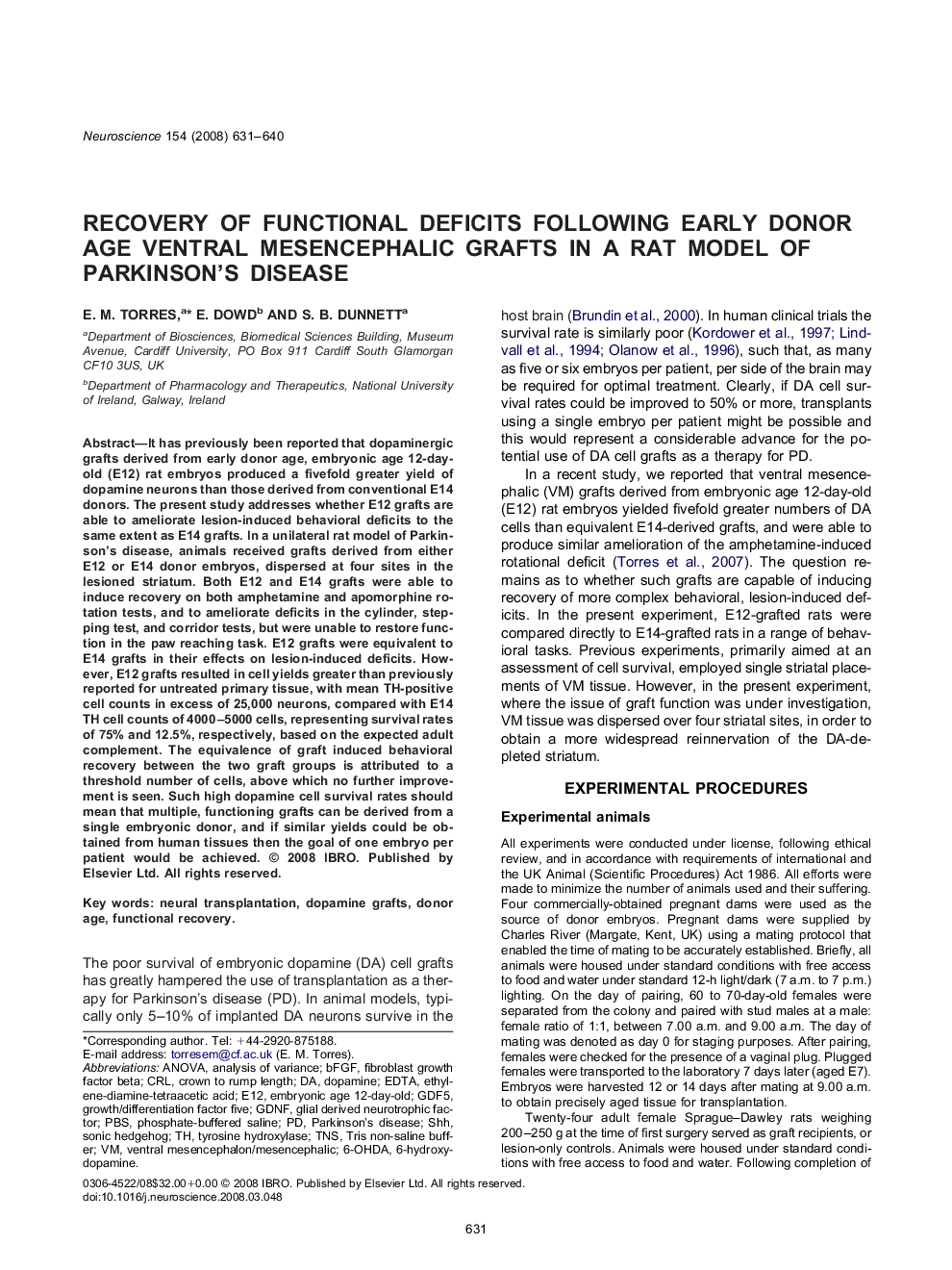| Article ID | Journal | Published Year | Pages | File Type |
|---|---|---|---|---|
| 4341614 | Neuroscience | 2008 | 10 Pages |
It has previously been reported that dopaminergic grafts derived from early donor age, embryonic age 12-day-old (E12) rat embryos produced a fivefold greater yield of dopamine neurons than those derived from conventional E14 donors. The present study addresses whether E12 grafts are able to ameliorate lesion-induced behavioral deficits to the same extent as E14 grafts. In a unilateral rat model of Parkinson's disease, animals received grafts derived from either E12 or E14 donor embryos, dispersed at four sites in the lesioned striatum. Both E12 and E14 grafts were able to induce recovery on both amphetamine and apomorphine rotation tests, and to ameliorate deficits in the cylinder, stepping test, and corridor tests, but were unable to restore function in the paw reaching task. E12 grafts were equivalent to E14 grafts in their effects on lesion-induced deficits. However, E12 grafts resulted in cell yields greater than previously reported for untreated primary tissue, with mean TH-positive cell counts in excess of 25,000 neurons, compared with E14 TH cell counts of 4000–5000 cells, representing survival rates of 75% and 12.5%, respectively, based on the expected adult complement. The equivalence of graft induced behavioral recovery between the two graft groups is attributed to a threshold number of cells, above which no further improvement is seen. Such high dopamine cell survival rates should mean that multiple, functioning grafts can be derived from a single embryonic donor, and if similar yields could be obtained from human tissues then the goal of one embryo per patient would be achieved.
